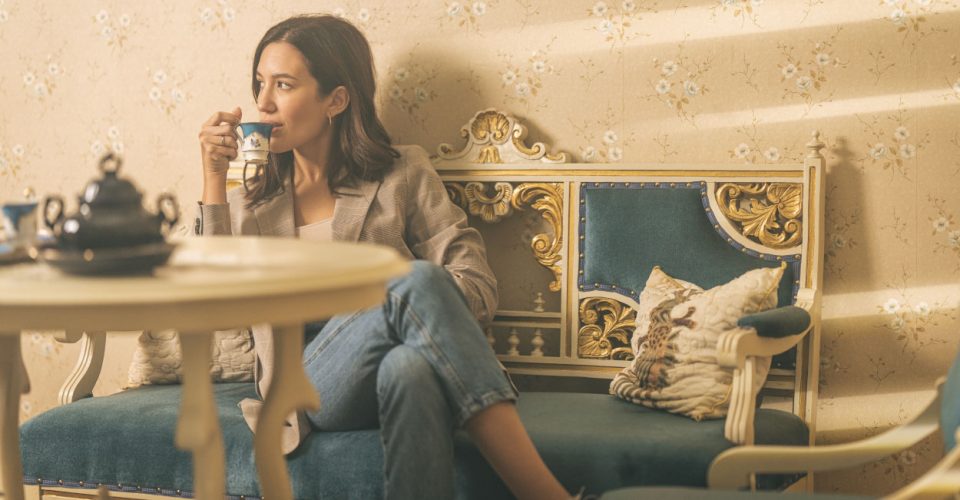Mixing Modern And Antique Furniture
Homeowners are always looking for ways to elevate their interior design, and bringing together pieces of furniture from different eras is a great trend that can help do exactly that.
If you’re looking for ways to add some additional character to your lounge or simply have some older furniture that you’re keen to utilise, combining modern and antique furniture items is a great way to bring a room to life.
No matter what your unique style or interior design preferences are, anyone can bring together modern and antique furniture options and enhance their home.
In this blog we’ll go into detail on mixing modern and antique furniture, providing tips on the best ways to do so.

What’s the difference between antique and vintage?
When referring to furniture that is not modern, there are a lot of interchangeable terms. For instance, you’re likely to hear people referring to items as ‘antique’ or ‘vintage’ without much differentiation.
However, while both terms do refer to older furniture or decor, there is a clear distinction between what each word relates to.
When an item is described as vintage, it means it’s older than 20 years old but less than a century. Whereas antique items are widely accepted as items that are more than 100 years old.
How to mix antique and modern furniture?
Whether you’ve inherited an old dresser from a relative or have picked up a bargain at a car boot sale, there are a variety of reasons why you might be considering mixing antiques with modern options.
No matter what your motivations are, it’s important to consider the most effective ways of combining the two styles whilst not overwhelming your room.
There are a whole host of ways in which you can successfully mix modern and antique furniture. These include:
Consider form and function
It’s important to strike the right balance when decorating a room. After all, you want your home to include a selection of items that mean something to you and that doesn’t just look like a showroom. That being said, it’s still important to consider how your furniture pieces, both antique and modern, can work together in order to create a coordinated space that has both form and function.
Antique furniture is often more unique and personal than modern alternatives, with craftsmanship and designs that are more intricate, decorative and harder to find. With this in mind, consider how your items fit into your space. Focus on the natural lines in your room and how your antique furniture fits into this. A good mixture of streamlined options and natural curvature is a good place to start.
However, keep it functional. If the item cannot be properly utilised for whatever reason, consider an alternative place for it.
Select your colour palette
It’s important to settle on an overall colour palette or style for your room. You can think about your own personal style and preferences to decide what this should be. There are a variety of options out there. It could be orthodox, lived in, classic, relaxed, elegant and much more.
No matter what you select, try and find furniture options that match this. Whether it’s antique or modern, having a clear vision on what you want the room to look like can help enhance your furniture items.
But be sure not to be too rigid. It’s good to have a clear idea on what you want the space to look like, but don’t instantly rule out items if they don’t match. For example, you could opt for different shades of the same colour to add some contrast to the room. Remain unique, and you really can’t go wrong.
Use the 80/20 rule
While this is by no means an exact science, the 80/20 rule is a good starting point when it comes to mixing your modern and antique furniture.
Unless you’re a dedicated antique collector or aficionado, it’s unlikely that you’re going to have a large amount of antique furniture. In fact, your modern pieces will probably be far more.
With this in mind, the rule suggests using 80% modern items and 20% antiques when decorating a space. While you can decide on your own approach, it’s a good place to start if you’re unsure of how much of each type of item to include.
Use statement pieces as a focal point
A statement antique piece is a great way to make an impact and add a ‘wow factor’ to a room. If you’re unsure what type of antique furniture to go for, we’d always advise on larger items that can act as a focal point and which your modern items can help to accessorise.
For example, consider an antique dresser, farm table or armoire. These items can draw the eye and help your interior design efforts stand out. And, don’t be afraid to redecorate or repurpose antique items if they’re looking a bit shabby. Antique doesn’t necessarily mean valuable, so a fresh lick of paint or new finish isn’t going to be detrimental.
Use larger pieces in smaller spaces
In a similar vein to focal points, playing with your room’s proportions is also a good way to utilise antique pieces of furniture. Even a small, modern room can receive the impression that it’s larger if bigger furniture pieces are used correctly.
Try big armchairs, deep sofas and lengthy coffee tables to achieve your desired effect, and complement them with your contemporary pieces.
Embrace contrasting styles
You’ve already made the decision to bring your antique and modern pieces together, so don’t do so halfheartedly. Fully embrace the contrast by deliberately pairing antique and modern items together side by side. You can do this by combining different textures, patterns, materials and colours. For instance, placing an antique, wooden coffee table in front of a stylish contemporary sofa is a great way to maximise the aesthetic of both pieces.

